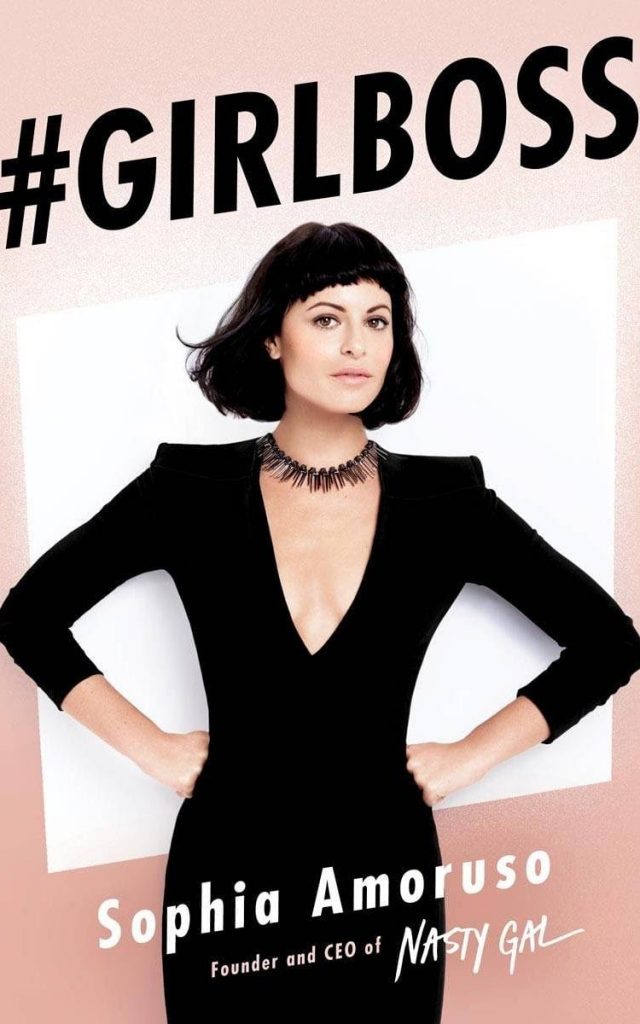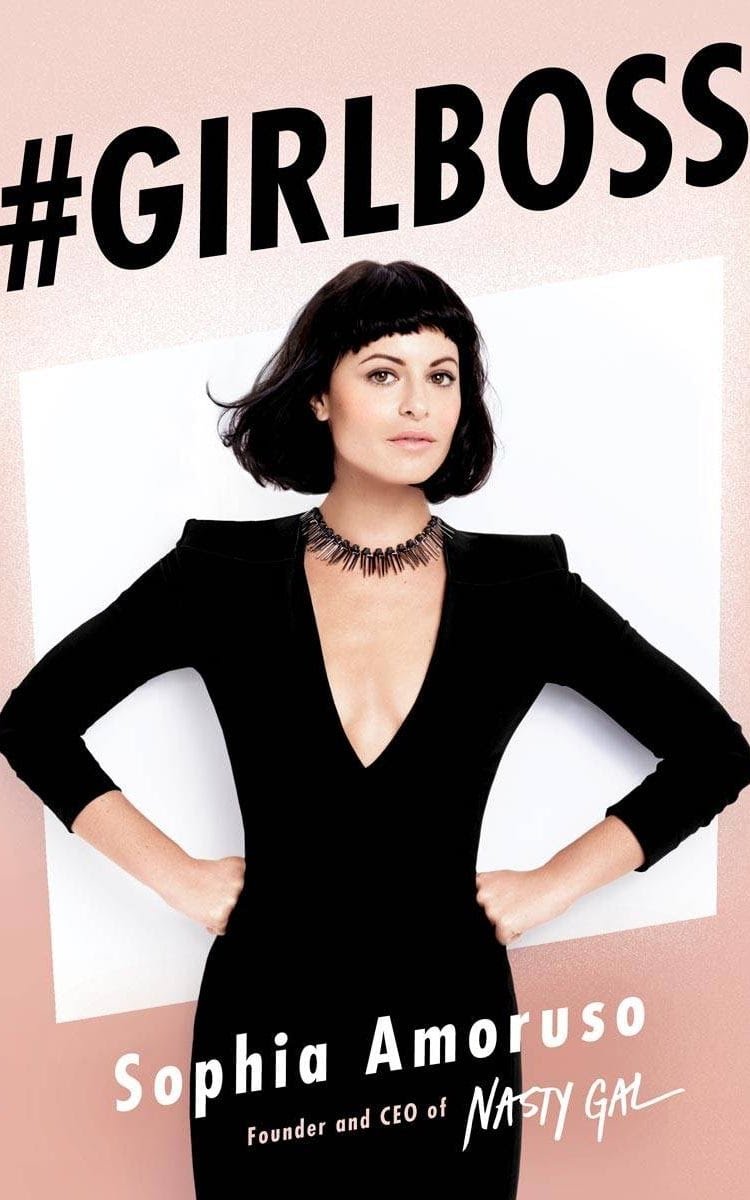
Underdog narratives typically build to that big, final victory, where our beaten-down hero somehow overcomes the odds stacked against them, achieving the dream they never thought could ever be achievable. We cut to black, the credits roll, and we’re left feeling good inside. But what happens when that inspiring tale suddenly gets a dodgy epilogue?
The major question hanging over the new Netflix drama Girlboss is how much it’ll lift from the inspiring rags-to-riches true-life story that forms its premise. Girlboss is based on the life of the Nasty Gal entrepreneur Sophia Amoruso, who turned an everyday eBay shop into a thriving lifestyle industry with nearly $300 million in sales.
If Sophia’s story was fictional, that’s probably where it’d end. But Amoruso’s internet-shaking clothing enterprise rapidly fell apart, its feminist credentials undermined by a series of lawsuits, and its increasing overhead resulting in the humiliation of a recent bankruptcy filing.
Luckily for Amoruso, Girlboss was in production long before Nasty Gal filed for Chapter 11 last November, but it has cast an uncomfortable shadow over the new series, replacing what would have been an inspiring true-life saga into a giant pink elephant.
It’s no surprise that Netflix was at one point drawn to Amoruso’s journey. A self-made millionaire with millennial swagger and a severe fringe, Amoruso was the sort of 21st century feminist success story that think piece writers could only dream of; a savvy, sweary, hashtag-friendly wunderkind who uses words like “curate” and “chill”, with a snarky, hipstery appeal that quickly turned her into the avocado-on-toast of e-commerce.
As Amoruso tells it, she went from dumpsters to high fashion with remarkable speed. The daughter of solidly middle class parents in mid-Nineties Sacramento, Amoruso learned to fend for herself when both of them lost their jobs, instilling in her a before-her-years work ethic that saw her set up her own lemonade business at age 9, read books about start-ups before she was in braces, and work ten different jobs by the time she was 22.
Having dropped out of community college, she was living with her step-aunt and struggling to get by as an anti-capitalist crusader. Her boyfriend lived in a treehouse, while she shoplifted and dumpster-dived for food. So she began selling clothes on eBay, something that turned out to be a particularly successful venture. She would raid charity shops for items of clothing, which she would then sell at an upscaled price. One Chanel jacket that she purchased for $8 at a Goodwill store ended up being sold for $1,000.
She would rope in friends to model vintage clothing for the tiny thumbnails on eBay, pictures that were well-lit and vaguely aspirational in comparison to the less fanciful photographs employed by other sellers, while she would regularly trawl the site for misspelled listings, assuming that someone selling an “Eve Saint Laurent” jacket would know little about the actual value of said items.
Named after an old Betty Davis track, Nasty Gal was soon cultivating its own brand identity: vintage clothes for cool, unique young women. Amoruso spread the word on MySpace and subsequently Facebook, targeting consumers who had previously ‘liked’ brand-appropriate fashion outlets like Nylon Magazine. Booted off eBay for promoting her own websites, Amoruso quickly moved her online store elsewhere, taking on employees and moving into an office in Los Angeles.
Partnerships were struck with fashion and footwear brands, and the success of the brand caught the eye of venture capitalists who wished to invest. Over $49 million of equity came Nasty Gal’s way, and Amoruso’s reported $280 million net worth saw her land on Forbes Magazine’s list of America’s Richest Self-Made Women.
Meanwhile, Amoruso was regularly cited as one of the key “influencers” in the Ban Bossy movement, which encouraged young women to annihilate the regressive definitions of the word, ones that tend to demean women who are assertive or ambitious. Amoruso was now talked about as if she were a girl-power hero and a role model for a generation of budding female entrepreneurs. “Amoruso is making feminism cool again,” claimed a hysterical Business Insider profile in 2014.
But the truth seemed a bit less empowering. 2015 saw the first of several lawsuits filed against Nasty Gal by former employees of the company, who claimed they had their employment terminated after becoming pregnant. Another employee claimed they were let go while suffering from advanced kidney failure, and that the company allowed her healthcare coverage to lapse, meaning she was unable to afford medication. Many of the cases have since been settled out of court.
The lawsuits suddenly compelled media outlets to take another glance at Nasty Gal’s practices, however, with a 2015 Jezebelexpose speaking off-the-record to several former employees, many of whom described the Nasty Girl workplace environment to be toxic.
Much of the blame, employees indicated, sat at the feet of Sheree Waterson, who was appointed CEO of Nasty Gal in 2014 after Amoruso decided to step down, apparently overwhelmed by the new responsibilities of her job in the wake of financier investment.
“I didn’t love having eight people reporting to me and asking me over and over if we’re hitting targets,” she told Forbes. “I’m a creative. I’m a brand-builder. I’m a rainmaker. I’m a pretty good marketer, but that’s not something I want to do every day.”
Waterson, according to testimonials sent to Jezebel, was an argumentative, ineffectual leader out of touch with the demands of Nasty Gal’s buyers. “When people presented her with legit selling data on items she deemed irrelevant, she would brush it off and push the merchants to invest in styles that she personally liked,” one claimed.
Others claimed that Amoruso became more fixated on being a famous figure than an actual businesswoman, particularly while launching her self-penned memoir, #GIRLBOSS. “If she wasn’t out doing press or interviews, she would be locked in her office; there was no visibility or sense of presence,” a former employee alleged. “Especially when #GIRLBOSS came out and her ego exploded, she began acting like a celebrity not a CEO.”
While the company began to internally implode, with multiple employees quitting and Waterson struggling to find new senior staff, industry insiders began to gossip about Nasty Gal’s longevity. Sales were down, expenses for brand promotion and expansion were up, and the company was struggling to secure capital or find a wealthy buyer. While breathless articles in Forbes Magazine estimated that the brand would hit $300 million in sales for 2015, bankruptcy documents revealed they only managed $77 million.
At the end of 2016, four months before the premiere of Girlboss, Nasty Gal filed for Chapter 11 bankruptcy. Their court filings revealed that the company had taken on several loans throughout 2015 in an effort to stave off the inevitable. Amoruso also marked the filing by resigning from role as Executive Chairwoman, a title she assumed when she passed off CEO duties to Waterson two years prior.
“Our decision to initiate a court-supervised restructuring will enable us to address our immediate liquidity issues, restructure our balance sheet and correct structural issues including reducing our high occupancy costs and restoring compliance with our debt covenants,” Waterson said in a statement. “Nasty Gal expects to attract a new equity partner or sponsor to take the company forward with a healthy balance sheet.”
So far, neither has materialised. That Amoruso stepped away from the company shortly before her house of cards started to crumble was also a strange coincidence, and one that observers couldn’t help but notice.
“It was a big captain abandoning the ship as it’s sinking,” said fashion and tech media company founder Richie Siegel to the Los Angeles Times. “She seemed to have prioritized her own brand over the company she helped build.”
It’s a fascinating statement, one that can’t help but cast both Amoruso and her Netflix drama in a new light. The streaming service is painting Girlboss as the tale of an inspiring, unconventional pioneer, but it might have been better off, and less morally dicey, to take a different approach. Not so much setting up Amoruso as an inspiring role model, but more a ruthless, uncompromising female anti-hero for the ages. How’s that for a cool brand identity?
Click here to become a Slaylebrity curator
By Telegraph





